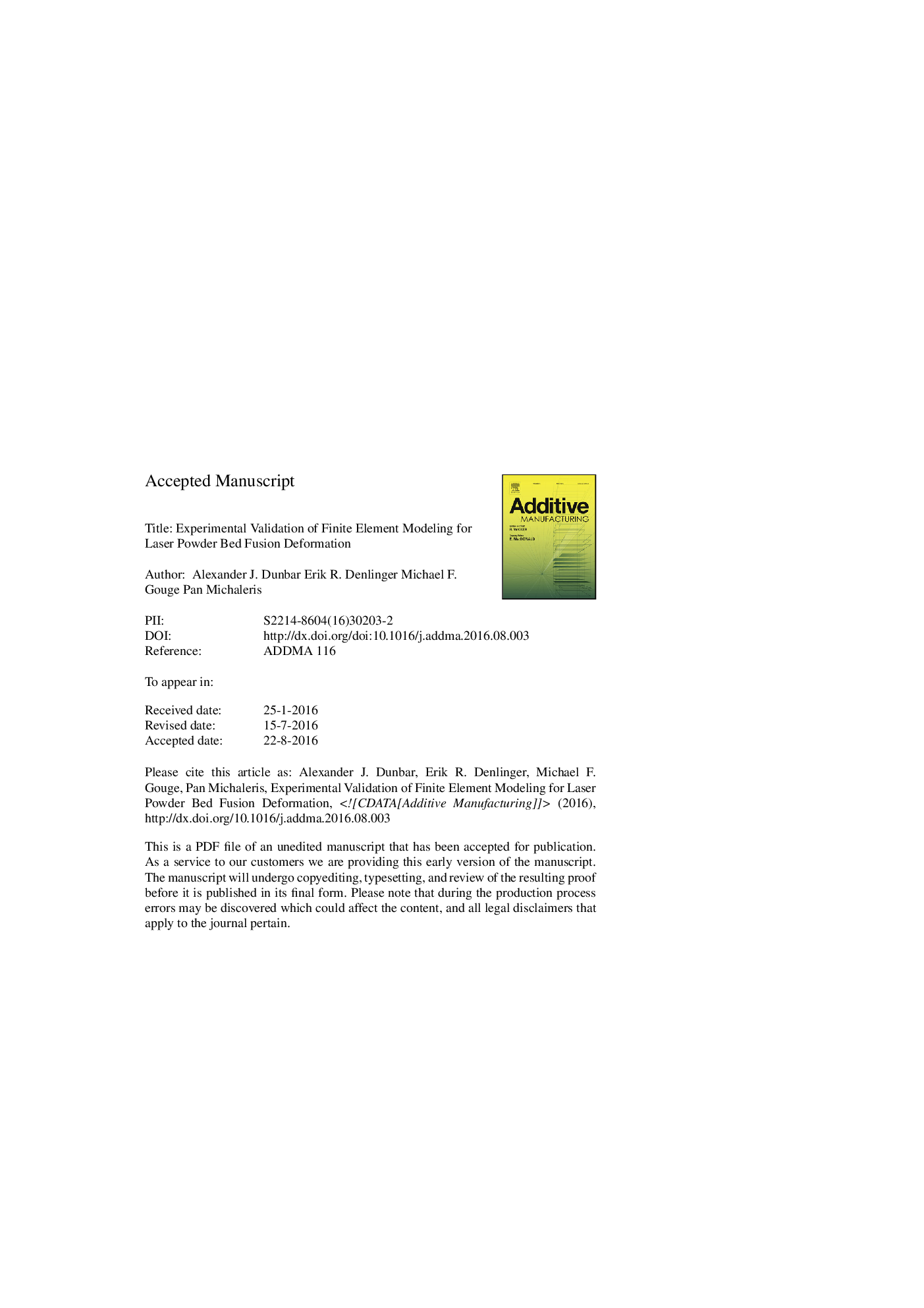| کد مقاله | کد نشریه | سال انتشار | مقاله انگلیسی | نسخه تمام متن |
|---|---|---|---|---|
| 10998019 | 1369649 | 2016 | 28 صفحه PDF | دانلود رایگان |
عنوان انگلیسی مقاله ISI
Experimental validation of finite element modeling for laser powder bed fusion deformation
ترجمه فارسی عنوان
اعتبار تجربی مدل سازی عناصر محدود برای تغییر شکل فیوز پودر لامپ پودر
دانلود مقاله + سفارش ترجمه
دانلود مقاله ISI انگلیسی
رایگان برای ایرانیان
کلمات کلیدی
مدل سازی عنصر محدود تولید افزودنی، ترکیب پودر تخت، اعوجاج، اعتبار تجربی،
موضوعات مرتبط
مهندسی و علوم پایه
سایر رشته های مهندسی
مهندسی صنعتی و تولید
چکیده انگلیسی
Experimental measurements are a critical component of model development, as they are needed to validate the accuracy of the model predictions. Currently, there is a deficiency in the availability of experimental data for laser powder bed fusion made parts. Here, two experimental builds of cylindrical geometry, one using a rotating scan pattern and the other using a constant scan pattern, are designed to provide post-build distortion measurements. Measurements are made using a coordinate-measuring machine which provides distortion profiles along the height of the part at four separate locations. Measurements show that for these cylindrical thin wall builds, there is no discernable effect on distortion from using the rotating versus constant scan patterns. Project Pan finite element modeling software is used to model each of the experimental builds. The simulation results show good agreement with experimental measurements of post-build deformation, within a 12% percent error as compared to experimental measurements. Using the FE model, the effect of a flexible versus a rigid substrate on distortion profile is examined. The FE model is validated against in situ experimental measurements of substrate distortion. The simulated results are used to study stress and distortion evolution during the build process. Internal stresses calculated by the model throughout the part are used in explaining the final part distortion. The combination of experimental and simulation results from this study show that the distortion of the top layer is relatively small (less than 30%) throughout the duration of the build process compared to the peak distortion, which occurs several layers below the most recently deposited layer. For these geometries once the part is built to a sufficient height, the peak distortion magnitude does not change.
ناشر
Database: Elsevier - ScienceDirect (ساینس دایرکت)
Journal: Additive Manufacturing - Volume 12, Part A, October 2016, Pages 108-120
Journal: Additive Manufacturing - Volume 12, Part A, October 2016, Pages 108-120
نویسندگان
Alexander J. Dunbar, Erik R. Denlinger, Michael F. Gouge, Pan Michaleris,
